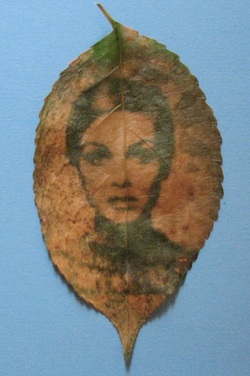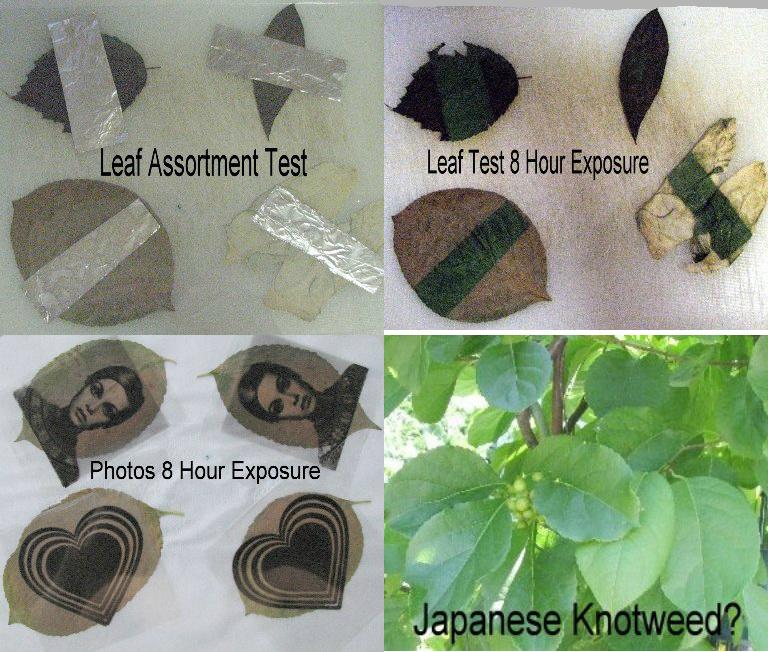
The science and art of making photographs on leaves has been around for quite a long time. In some cases, it is a fine art, and in other situations it is just a craft that is fun and challenging. But, in either instance there is one major problem; making an image that has some ability to last over time. The typical approach is to embed the leaf with the image in a clear epoxy or sandwich it between Plexiglas with UV protection. If some method of preservation is not used the image will continue to bleach when exposed to light. And, for me, the task was to come up with a simple process to stabilize the image and still maintain the image integrity. After many experiments, the process I came up with, while still a work in progress seems to work fairly well. And, there is a bit of chemistry involved, but the information on that aspect is not necessary for readers to use the information to produce leaves with images. But, here are the steps that I used to make and preserve the images:
First, the following materials will be needed: Baking soda, glycerin, and copper sulfate. The copper sulfate can be found at garden centers and hardware stores sold as root killer. The glycerin can be found at all drug stores.
Second, gather some leaves, either from your own yard or from the super market. Place a strip of aluminum foil over each leaf and make a sandwich under glass as shown in the photos below.
Third, place the leaves in the sun and watch over time to see the bleaching of the chlorophyll. With the leaves that I selected the best were Japanese Knotweed and spinach. Some leaves will bleach in a few hours but some may bleach more slowly or not at all.
Procedure: The process is much clearer in the video but step 1 is to blanch the leaf in a slightly alkaline water solution. In a saucepan filled with enough water to cover the leaf, add just a pinch of baking soda to make the water alkaline and bring to a boil. Blanch for about two minutes. This step will maintain the color but allow the cells to be broken and air to be removed. It will also attack the magnesium in the chlorophyll so that we can replace it with a copper ion.
In the second step make a 5 % solution of water and glycerin. (For every 95 milliliters of water (3 fluid ounces), add 5 milliliters of glycerin) 0.17 fluid ounces). This is not a critical measurement but more of a guideline.
For step 3 add a small amount of the copper sulfate so that the solution is slightly blue. This solution should be boiled for the first time to remove the air, but after that the leaf can be added to the solution when cold.
Step 4 is to add the leaf for about 2-3 minutes. Remove and if it is obviously blue it can be rinsed with water. Lay the leaf flat on a paper towel and dry. The process is complete!
Note: The process as described and illustrated in the video worked as evidenced by being able to place the treated leaf in the sun for 4 days with no further bleaching. However, I have used only a small sample of leaves and cannot predict how all chlorophyll containing materials will perform. It is also possible to use light sources other than the sun. Grow lights and fluorescent light with blue and UV light will work but take longer. The work presented is to the best of my knowledge a useful strategy for the preservation of photographic images but as mentioned, is a work in progress. Please feel free to add to this information with your own experiments and ideas. Good luck and have some fun!
Alternative Photography leaf photography with chlorophyll Here.

 RSS Feed
RSS Feed
